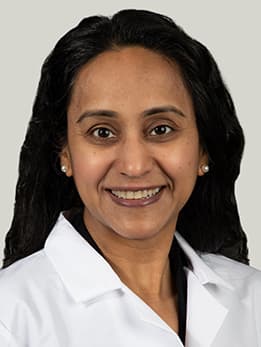Spanish language vaccine resources harder to access, while Hispanic vaccination rates remain below overall average, study finds

Many have been surprised by the slower-than-expected uptake of the safe and effective COVID-19 vaccines by U.S. adults. While politics and misinformation contribute, particularly in some populations, language barriers to information and vaccine scheduling tools also may play a role.
In a study published January 21, 2022, in Journal of General Internal Medicine, researchers from the University of Chicago Medicine examined Hispanic vaccination rates in the 10 most populous U.S. cities, alongside an assessment of the availability of Spanish language COVID-19 vaccine resources in those regions. They found that the majority of the eight “big box” retailers they assessed did not have their main COVID-19 vaccine information page available in Spanish, and half did not offer vaccine scheduling in Spanish. Concurrently in the same cities, the Hispanic vaccination rates ranged from 29% to 49%, in comparison to 64% for the overall U.S. population.
“We know that the pandemic has hit Latinx communities disproportionately,” said co-author Diana Marino-Nunez, a second-year student at the University of Chicago Pritzker School of Medicine. “What would you do if you were Spanish-speaking and wanted access to a vaccine? We found that it’s not straightforward – there are multiple pages, multiple links you have to go through, where there are inconsistencies in language access. When we think about these public health issues of access, information distribution, and resources – we rely on these big retailers, but many of them don’t even have information available in Spanish. How can we change these things so they don’t perpetuate the health disparities that we see in our communities?”
The researchers pointed out that Hispanic populations often already face other forms of inequity, such as fewer internet and technology resources. More clicks may present additional barriers to accessing critical information needed for getting a vaccination – particularly if the Spanish language information is only accessible via English language websites.
“When we roll out policies, we need to think about health equity,” said senior author Arshiya Baig, MD, MPH, Associate Professor of Medicine at UChicago Medicine. “It has to be part of the way that we provide access to testing, to vaccines, to care and follow-up — and now, how we’re providing at-home tests. Who are we excluding, and who are we including? By providing only four at-home tests per household, does this neglect the need of multigenerational homes? There may be some thought paid to equity when rolling out these policies but there is still a lot of inequity, even if it’s unintentional.”
The researchers recommend that retailers increase the visibility of Spanish language resources on their websites, placing links to vaccine registration front and center. They say incorporating non-English resources into the planning and execution of public health strategies is critical for encouraging eligible individuals to register for and receive their vaccines.
“Imagine navigating these resources, not as someone who is a member of the English-speaking community who is very tech-literate, but rather as someone whose primary language is not English who may not know much about computers and the internet,” said Marino-Nunez. “We need resources that are very visible and very clear and not hidden behind English language pages. There needs to be a consideration for non-English speakers – not as an exception, an alternative or an afterthought – but rather as part of the main audience for these resources.”
The study, “Spanish Language Access to COVID-19 Vaccination Information and Registration in the 10 Most Populous Cities in the USA," included the additional authors Maria Isabel Paz and Vineet Arora, MD, MAPP, of the University of Chicago.

Arshiya Baig, MD, MPH
Arshiya Baig, MD, MPH, is a primary care physician who treats high blood pressure, diabetes and other common illnesses in adults. She is also the director of the Center for Community Health and Vitality.
Learn more about Dr. Baig